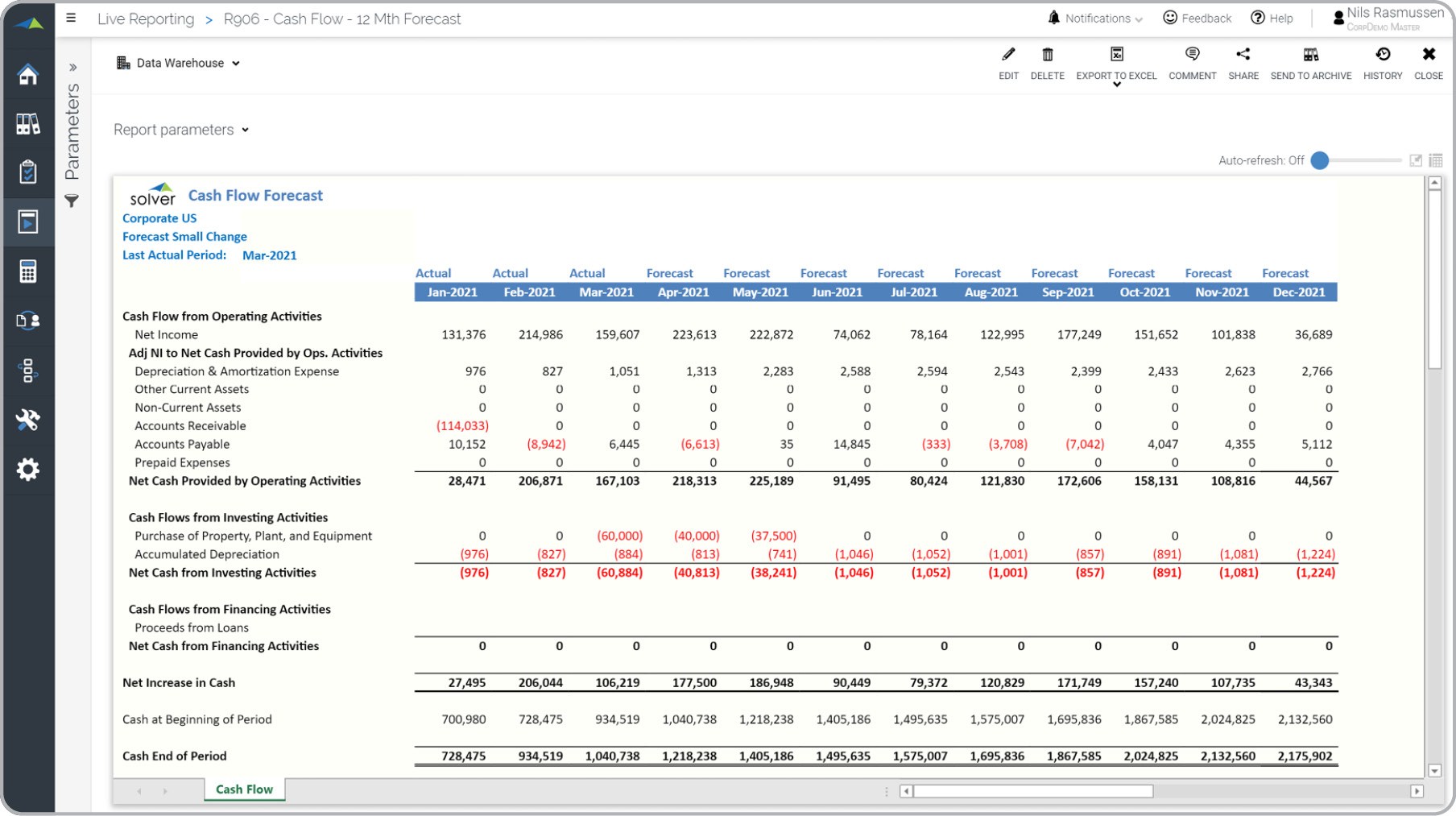

Finance
How Is Federal Pension Calculated
Published: November 27, 2023
Learn how federal pensions are calculated and understand the financial factors involved. Discover the key components and formulas utilized in determining your federal retirement income.
(Many of the links in this article redirect to a specific reviewed product. Your purchase of these products through affiliate links helps to generate commission for LiveWell, at no extra cost. Learn more)
Table of Contents
- Introduction
- The Basics of Federal Pensions
- Calculation Factors for Federal Pensions
- High-3 Average Salary Calculation
- Service Credit Calculation
- Cost-of-Living Adjustment (COLA)
- Early Retirement and Deferred Retirement
- Special Considerations for Law Enforcement Officers and Firefighters
- Survivor Benefits
- Lump-Sum Option
- Conclusion
Introduction
Welcome to the world of federal pensions! If you’re a federal employee or planning to become one, understanding how your pension is calculated is essential for a secure financial future. Federal pensions are a key component of the retirement benefits provided to eligible individuals who have served in the federal government or specific positions. This comprehensive article will delve into the intricacies of how federal pensions are calculated, providing you with the knowledge and insights needed to make informed decisions regarding your retirement.
As a federal employee, you contribute a portion of your salary to the Federal Employees Retirement System (FERS) or the Civil Service Retirement System (CSRS), depending on when you were hired. These pension systems aim to provide federal employees with a stable and reliable income during their retirement years. Your pension is based on several factors, including your length of service, average salary, and retirement system. Understanding the formulas and variables involved will give you a clearer picture of the financial benefits you can expect to receive.
In this article, we will explore the various factors that affect the calculation of federal pensions, such as the High-3 Average Salary Calculation and Service Credit Calculation. We will also discuss the Cost-of-Living Adjustment (COLA) and how it impacts your pension’s value over time. Additionally, we will delve into special considerations for law enforcement officers and firefighters, survivor benefits, and the lump-sum option.
By the end of this article, you will have a solid understanding of the key elements that contribute to the calculation of your federal pension. Armed with this knowledge, you can better plan for a financially secure retirement and make informed decisions about your retirement options. So, let’s dive in and explore the fascinating world of federal pension calculations!
The Basics of Federal Pensions
Before we dive into the specifics of how federal pensions are calculated, it’s important to understand the basic framework of these retirement benefits. As a federal employee, you can be eligible for either the Federal Employees Retirement System (FERS) or the Civil Service Retirement System (CSRS), depending on your date of hire.
FERS covers employees hired on or after January 1, 1987, while CSRS applies to those hired before that date. The FERS pension system is a three-tiered plan that includes a basic pension, Social Security benefits, and the Thrift Savings Plan (TSP). On the other hand, the CSRS pension system is a stand-alone plan that provides a defined benefit based on length of service and average salary.
Regardless of whether you fall under FERS or CSRS, your pension is designed to provide a stable and consistent income stream during your retirement years. To be eligible for a federal pension, you generally need to have served a minimum of five years in a qualifying federal position, although there are variations based on your specific retirement system.
Federal pensions are considered a “defined benefit” plan, meaning the amount you receive is predetermined based on a formula. Unlike a “defined contribution” plan, where the pension amount is dependent on the contributions made and investment performance, federal pension calculations are set in stone.
The amount of your pension is determined by various factors, including your length of service, average salary, and retirement system. The formulas used to calculate your pension can be complex, but understanding the underlying principles will help demystify the process.
It’s also important to note that federal pensions are just one part of your overall retirement benefits package. Federal employees are also eligible for Social Security benefits and can contribute to the Thrift Savings Plan (TSP), a 401(k)-style retirement savings plan, to supplement their pension income.
Now that we have a solid understanding of the basics of federal pensions, let’s delve into the specific factors that determine the calculation of your pension, starting with the High-3 Average Salary Calculation.
Calculation Factors for Federal Pensions
When it comes to calculating federal pensions, several key factors come into play. Understanding these factors will give you insight into how your pension is determined and allow you to make informed decisions when planning for your retirement.
The two primary factors that influence the calculation of federal pensions are the High-3 Average Salary Calculation and the Service Credit Calculation.
The High-3 Average Salary Calculation is a crucial component in determining your pension amount. It refers to the average salary of your highest three consecutive years of Federal Service. These three years don’t have to be consecutive calendar years, but rather the highest earning years throughout your federal career. The higher your average salary during this period, the higher your pension amount will be.
The Service Credit Calculation is another important aspect of determining your pension. Your service credit represents the number of years, months, and days you have served in a qualifying federal position. The longer you have served, the higher your service credit will be, and consequently, the greater your pension will be. Your service credit also takes into account any unused sick leave days that you have accumulated throughout your career.
Other factors that can affect your federal pension calculation include the structure of your retirement system (FERS or CSRS) and your retirement age. For example, FERS uses a different formula for calculating the pension portion compared to CSRS. Additionally, the age at which you retire can impact your pension amount. In general, retiring at the minimum age of eligibility will result in a reduced pension, while waiting until you reach your full retirement age will provide a higher monthly benefit.
It’s essential to note that federal pensions are subject to cost-of-living adjustments (COLA) to mitigate the effects of inflation. COLA ensures that your pension keeps pace with the rising cost of living, providing you with a steady income throughout your retirement years.
By understanding the calculation factors for federal pensions, you can better plan for your retirement and estimate the income you’ll receive from your pension. It’s important to keep in mind that these calculations are just one piece of the puzzle, as your overall retirement income also includes Social Security benefits and potential additional savings through the Thrift Savings Plan (TSP).
Now that we have explored the calculation factors, let’s dive deeper into the High-3 Average Salary Calculation and understand how it impacts your federal pension.
High-3 Average Salary Calculation
The High-3 Average Salary Calculation is a crucial element in determining your federal pension amount. It refers to the average salary of your highest three consecutive years of Federal Service. This calculation takes into account your salary during these three years, adjusting for inflation to ensure that your pension reflects the earning potential of your highest earning years.
To calculate your High-3 Average Salary, the Office of Personnel Management (OPM) will identify the three years of your federal service where your salary was the highest. These years do not have to be consecutive calendar years, but rather any three years throughout your career where you earned the most. For example, if you earned the highest salary in years 5, 8, and 12 of your federal career, these would be the years used in the calculation.
Once the three highest earning years have been determined, the salaries earned in those years are added together and divided by three to obtain the average. This average salary is then used as a baseline to compute your pension benefit.
It’s important to note that the High-3 Average Salary Calculation is a significant factor in determining your pension amount. The higher your average salary during those three years, the higher your pension will be. This underscores the importance of maximizing your income during your federal service, as it can have a lasting impact on your retirement benefits.
It’s also worth mentioning that the salaries used in the High-3 Average Salary Calculation are adjusted for inflation. This adjustment ensures that your pension reflects the purchasing power of your highest earning years, accounting for changes in the cost of living over time. The OPM uses the Consumer Price Index for Urban Wage Earners and Clerical Workers (CPI-W) to make these inflation adjustments.
By understanding the High-3 Average Salary Calculation, you can strategize ways to increase your income during your federal career, such as pursuing promotions, taking on additional responsibilities, or seeking specialized training. These actions can not only enhance your current financial situation but also have a positive impact on your future pension benefit.
Now that we have explored the High-3 Average Salary Calculation, let’s move on to the next factor in determining your federal pension: the Service Credit Calculation.
Service Credit Calculation
The Service Credit Calculation is a crucial aspect in determining your federal pension. It takes into account the number of years, months, and days you have served in a qualifying federal position. The longer your service, the higher your service credit, and consequently, the greater your pension will be.
When calculating your service credit, the Office of Personnel Management (OPM) considers your total years of federal service, including any part-time or temporary positions you have held. Additionally, OPM takes into account any unused sick leave days you have accumulated during your federal career.
For each year of service, you are awarded one year of service credit. For example, if you have served in a qualifying federal position for 20 years, you will receive 20 years of service credit. This service credit is essential in determining the percentage of your high-3 average salary you will receive as your pension benefit.
While the calculation of service credit seems straightforward, it’s important to understand that specific rules and exceptions may apply. For instance, military service time can be credited towards your service credit if you make a deposit into the retirement system to account for that period of service. Additionally, certain types of service, such as part-time or seasonal employment, may require adjustments in the calculation of service credit.
It’s also worth noting that your unused sick leave days can have a substantial impact on your service credit. For every 173 hours of unused sick leave, you are credited with one additional month of service. This means if you have accumulated significant sick leave throughout your federal career, it can potentially boost your service credit and increase your pension benefit.
Understanding the Service Credit Calculation is vital because it highlights the importance of longevity in federal service. The more years you serve, the higher your pension will be. This provides an incentive for federal employees to stay in their positions and demonstrate loyalty to the federal government.
Additionally, it’s crucial to keep track of your service credit throughout your federal career. Ensure that the OPM has accurate records of your employment history and any periods of military service, so you receive the proper credit for your years of service. Reviewing your service credit regularly and correcting any errors or discrepancies will help ensure you receive the maximum pension benefit you are entitled to.
Now that we have explored the Service Credit Calculation, let’s move on to another critical aspect of federal pensions: the Cost-of-Living Adjustment (COLA).
Cost-of-Living Adjustment (COLA)
The Cost-of-Living Adjustment (COLA) is a vital component of federal pensions that helps protect retirees from the impact of inflation. COLA is an annual adjustment made to your pension to ensure that its value keeps pace with the rising cost of living.
Each year, the Office of Personnel Management (OPM) determines the COLA based on the Consumer Price Index for Urban Wage Earners and Clerical Workers (CPI-W). This index measures the average change over time in the prices paid by urban consumers for a representative basket of goods and services.
The COLA is applied to your federal pension to increase its value in line with the rate of inflation. This adjustment helps maintain the purchasing power of your pension benefits, allowing you to maintain a similar standard of living even as the cost of goods and services increases.
It’s important to note that the COLA is not a guaranteed amount. The adjustment is based on the increase in the CPI-W from one year to the next. If there is no increase or a minimal increase in the index, there may be no COLA for that year.
The COLA is typically applied to federal pensions, Social Security benefits, and other programs that provide income for retirees. However, it’s essential to understand that the COLA calculation may differ among these programs.
For federal pensions under the Federal Employees Retirement System (FERS), the COLA is applied to a portion of the pension called the Cost-of-Living Annuity (COLA). The COLA is applied to the portion of the pension attributable to service after December 31, 1983. This means that only a portion of your federal pension may be subject to the COLA adjustment.
For retirees under the Civil Service Retirement System (CSRS), the full pension amount is subject to the COLA. However, CSRS COLA calculations may be different from those under FERS.
It’s important to note that the COLA adjustment does not affect your pension immediately upon retirement. Typically, COLA adjustments are applied starting the second calendar year of retirement. This means that if you retire in 2021, your pension will not receive a COLA adjustment until 2023.
Understanding the COLA is essential because it helps protect the value of your federal pension over time. It ensures that your pension benefits are not eroded by inflation and allows you to maintain a stable and reliable income throughout your retirement years.
Now that we have explored the Cost-of-Living Adjustment (COLA), let’s move on to discuss early retirement and deferred retirement options for federal employees.
Early Retirement and Deferred Retirement
As a federal employee, you may have the option to retire early or defer your retirement beyond the typical eligibility age. Understanding the implications and considerations of early retirement and deferred retirement can help you make informed decisions about your federal pension and retirement plans.
Early retirement refers to retiring from federal service before reaching the minimum retirement age (MRA) or the age at which you would be eligible for an unreduced pension. The MRA varies depending on your date of birth and ranges from 55 to 57 years old.
Retiring early can have both advantages and disadvantages. On the positive side, early retirees may have more years to enjoy their retirement and pursue other interests. However, early retirement may result in a reduced pension benefit, as your pension calculations are based on a formula that considers your age and years of service. Generally, retiring early will result in a reduction in your pension amount for each year that you retire before reaching your MRA.
Deferred retirement, on the other hand, refers to delaying your retirement beyond your eligibility date. This option can be beneficial if you want to continue working in your federal position, need to accumulate more years of service to maximize your pension benefit, or simply want to delay tapping into your retirement funds.
By deferring your retirement, you may be able to increase your pension amount by accruing additional years of federal service. Additionally, you may have the option to continue contributing to the Thrift Savings Plan (TSP) or other retirement savings vehicles, allowing your savings to grow further before entering retirement.
It’s important to note that there are specific restrictions and guidelines associated with early retirement and deferred retirement. For example, there may be age and service requirements to be eligible for these options. Additionally, early retirees may face limitations on rejoining the federal workforce or receiving certain retirement benefits.
Before making a decision regarding early or deferred retirement, it’s crucial to carefully consider your financial situation, future goals, and the impact on your overall retirement benefits. Evaluating factors such as the potential reduction in pension benefits, healthcare coverage, Social Security eligibility, and your ability to maintain a comfortable lifestyle are essential in making an informed choice.
Discussing your options with a financial advisor or retirement counselor who specializes in federal employee benefits can provide valuable guidance and help you navigate the complexities of early and deferred retirement.
Now that we have explored early retirement and deferred retirement, let’s move on to discuss special considerations for law enforcement officers and firefighters regarding federal pensions.
Special Considerations for Law Enforcement Officers and Firefighters
Law enforcement officers and firefighters play a crucial role in ensuring public safety, and their unique responsibilities often come with special considerations when it comes to federal pensions. Recognizing the demanding nature of their work, specific retirement rules and benefits are in place to cater to the needs of these dedicated professionals.
Law enforcement officers and firefighters who meet the respective criteria are generally eligible for enhanced retirement benefits. Under the Federal Employees Retirement System (FERS), these positions fall under special retirement categories known as “special provisions.”
One of the key benefits for law enforcement officers and firefighters is the ability to retire earlier than other federal employees. Law enforcement officers can retire at the age of 50 with a minimum of 20 years of service, while firefighters have the option to retire at the age of 50 with a minimum of 20 years of service or at the age of 57 with a minimum of 5 years of service.
Another important consideration for law enforcement officers and firefighters is the calculation of their pension benefits. While the general formula for FERS pensions applies to these positions as well, the special provisions take into account additional service credit and higher annuity computation rates, resulting in potentially higher pension amounts. These enhanced benefits recognize the unique challenges and risks associated with these roles.
Moreover, law enforcement officers and firefighters who retire under the special provisions may be eligible for the Law Enforcement Officer (LEO) or Firefighter (FF) Retirement Supplements. These supplements bridge the gap between retirement and the age at which Social Security benefits become available, typically at age 62. The LEO and FF Retirement Supplements provide additional income to supplement federal pensions during this interim period.
It’s important for law enforcement officers and firefighters to fully understand the eligibility requirements and nuances of their specialized retirement benefits. Consulting with a knowledgeable retirement counselor or human resources specialist can help clarify any questions or concerns specific to these occupations.
Law enforcement officers and firefighters make significant sacrifices in service to their communities, and the special considerations for their federal pensions recognize and honor their dedication. These provisions provide a measure of financial security and reward for their commitment, ensuring a more comfortable retirement for these public servants.
Now that we have discussed special considerations for law enforcement officers and firefighters, let’s move on to exploring the topic of survivor benefits within federal pensions.
Survivor Benefits
One critical aspect of federal pensions is the provision for survivor benefits. Survivor benefits offer financial protection to the loved ones of federal employees in the event of their death. Understanding the options and considerations surrounding survivor benefits is crucial for federal employees and their families.
Under the Federal Employees Retirement System (FERS), survivor benefits are available to eligible surviving spouses and dependent children of federal employees. These benefits provide a source of income to help support the surviving family members after the retiree’s passing.
Survivor benefits typically consist of a monthly annuity payment to the surviving spouse and, if applicable, dependent children. The amount of the annuity is a percentage of the retiree’s unreduced pension and depends on several factors, including the retiree’s election and the age and marital status of the surviving spouse.
For surviving spouses, the annuity can range from 25% to 50% of the retiree’s unreduced pension amount. The percentage is determined by the retiree’s election at the time of retirement, which can be adjusted to accommodate different financial needs and circumstances.
In the case of dependent children, they may be eligible to receive a survivor annuity until they reach the age of 18 (or 22 if they are full-time students). The amount of the annuity for children is generally a flat rate or a percentage of the retiree’s annuity, split equally among the eligible children.
It’s important to note that survivor benefits also offer the option for a lump-sum payment instead of monthly annuity payments. This lump-sum payment can provide a significant amount upfront but may have some trade-offs in terms of ongoing financial security.
Additionally, to be eligible for survivor benefits, the deceased federal employee must have met specific requirements, such as having completed a minimum amount of service or, in some cases, having reached the minimum retirement age.
Considering survivor benefits is an essential part of retirement planning. It ensures that your loved ones are provided for in the event of your passing, offering financial security and peace of mind.
It’s important to review and update your beneficiary information regularly to ensure that your survivor benefits are appropriately allocated. Life changes, such as marriage, divorce, or the birth of a child, may require adjustments to your beneficiary designations.
Consulting with a retirement specialist or financial advisor who understands federal benefits can help you navigate the complexities of survivor benefits and make informed decisions for the future well-being of your loved ones.
Now that we have discussed survivor benefits, let’s move on to explore the lump-sum option within federal pensions.
Lump-Sum Option
Within the realm of federal pensions, there is an option to receive a lump-sum payment instead of the traditional monthly annuity. This lump-sum option provides individuals with the opportunity to receive a significant upfront payment, rather than a stream of regular payments over their retirement years.
Under the Federal Employees Retirement System (FERS), eligible employees may choose the lump-sum option at the time of retirement. This option allows individuals to receive a one-time payment representing the actuarial present value of their future monthly pension benefits.
It’s important to note that selecting the lump-sum option has trade-offs and considerations. While it can offer a sizable sum that can be invested or used for immediate financial needs, it also means forfeiting the guaranteed monthly pension payments for the rest of your retirement years.
Opting for the lump-sum payment means taking on the responsibility of managing and investing that sum to ensure it lasts throughout your retirement. This requires careful financial planning and consideration of factors such as personal risk tolerance, investment knowledge, and long-term financial goals.
Additionally, it’s worth noting that the lump-sum option does not completely eliminate the risk of running out of funds during retirement. If the lump-sum is not invested or managed appropriately, it may not provide a sustainable income stream over the long term.
For individuals considering the lump-sum option, it’s essential to carefully evaluate their financial situation, future goals, and risk tolerance. Consulting with a financial advisor or retirement specialist can provide valuable insights and guidance in making an informed decision that aligns with personal circumstances.
It’s important to note that the lump-sum option is not available for everyone and may have restrictions or limitations based on individual circumstances or retirement systems. Therefore, it’s crucial to review your specific retirement plan, consult with professionals, and fully understand the implications before making a decision.
Deciding whether to choose the lump-sum option requires careful consideration and evaluation of individual needs and preferences. It’s crucial to weigh the potential benefits and risks, considering factors such as investment opportunities, financial goals, and overall retirement planning.
Now that we have explored the lump-sum option within federal pensions, let’s summarize our key findings and conclude this comprehensive guide to federal pension calculations.
Conclusion
In conclusion, understanding how federal pensions are calculated is essential for federal employees planning for a secure retirement. The calculation factors, such as the High-3 Average Salary Calculation and Service Credit Calculation, play a significant role in determining the pension amount.
We explored the High-3 Average Salary Calculation, which considers the average salary of the highest three consecutive years of Federal Service. We also discussed the Service Credit Calculation, which takes into account the number of years, months, and days of federal service, including any unused sick leave.
Furthermore, we delved into the Cost-of-Living Adjustment (COLA), which ensures that federal pensions keep pace with inflation, providing retirees with stable purchasing power throughout their retirement years.
We also discussed the options of early retirement and deferred retirement, highlighting the advantages and considerations of each choice. For law enforcement officers and firefighters, we explored the special provisions and enhanced benefits available to recognize their unique roles.
Survivor benefits were another crucial component we examined, emphasizing the protection provided to loved ones in the event of a federal employee’s passing. Lastly, we discussed the lump-sum option as an alternative to the traditional monthly annuity, outlining the benefits and challenges associated with this choice.
Understanding these concepts and considerations equips federal employees with the knowledge needed to make well-informed decisions about their retirement and pension benefits. It’s crucial to consult with retirement specialists, financial advisors, or human resources professionals who have expertise in federal employee benefits to ensure optimal retirement planning.
Remember, your federal pension is just one piece of your overall retirement puzzle. It’s important to consider other sources of income, such as Social Security benefits and savings through the Thrift Savings Plan (TSP), to create a comprehensive retirement plan.
By taking the time to understand the intricacies of federal pension calculations and considering your individual circumstances, you can pave the way for a financially secure and fulfilling retirement. So, start planning today and make informed choices for your future well-being.














